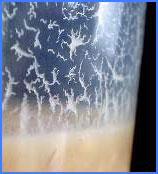Data provider
Budapest University of Technology and Economics, Department of Applied Biotechnology and Food Science, Environmental Microbiology and Biotechnology Group
Contact details
Compulsory sheet
Information on the method
Measured endpoint
Description of the measurement technique
Measuring range
- Metals, semi-metals and their compounds
- mercury
Measuring range
- Pesticides
- cipermetryn
Implementation conditions
Implementation costs
Innovation, main features
Direkt érintkeztetéses teszt, mely magasabbrendű élőlényt, egy állati tesztorganizmust használ.
Peszticidekkel szennyezett talajoknál érdemes használni.
A Nematódák nehézkes detektálása miatt időigényes, hiszen a majdnem színtelen állatokat mikroszkópban vizsgáljuk.
5-5 csepp 2 hetes Nematoda tenyészetet cseppentek a mikrotitrátorlemez mélyedéseibe, egy hétig 20C-on inkubáljuk, a 7 nap elteltével megfigyeljük az első generáció megjelenését és csak azokba a mélyedésekbe teszünk 80-80 mikroliter mintát (talajszuszpenzió), ahol megjelent az első generáció, ezután újabb 7 napos inkubáció következik,azután leolvasás, az újabb generáció megjelenése nem toxikus a mintát jelent, ahol nem jelent meg ott toxikus volt a minta.
SWOT (evalaution based on scores)
SWOT (evaluation in words)
Peszticidekre érzékeny tesztorganizmus a Nematoda, tehát az ökotoxikológiában hiánypótló.
A Nematódákkal mérhető végpontokdetektálása nehézkes, időigényes.
Nemcsak túlélés és halál jelenthet végpontot, hanem a hőtermelés, vagy az oxigénfelvétel is.
Nincsenek.
Other information, references
Könnyen és gyorsan szaporítható állati tesztorganizmus.
Bagi, A.: Talajtoxikológiai teszt fejlesztése nematódával, Tudományos Diákköri Konferencia, Budapest, 2006
